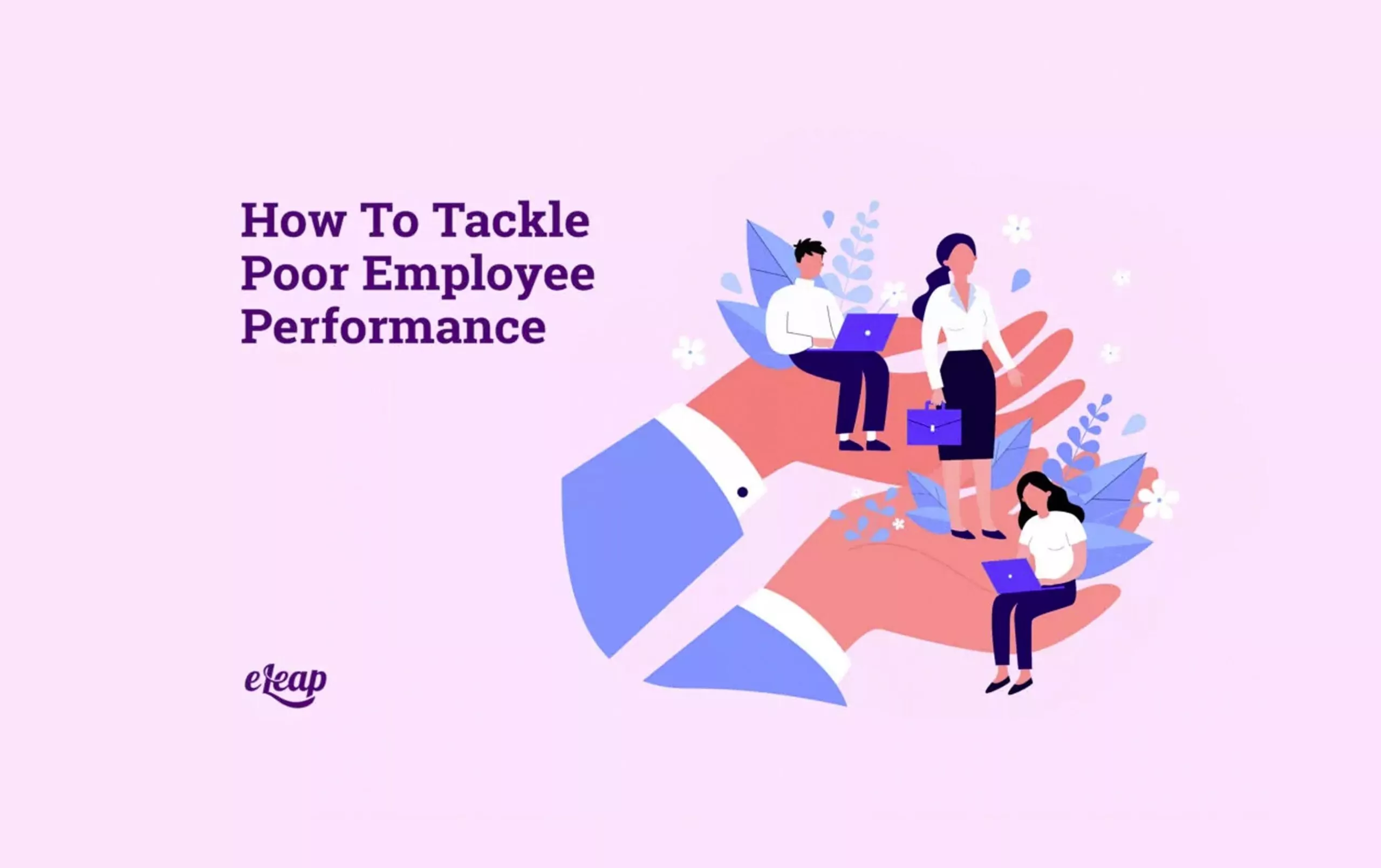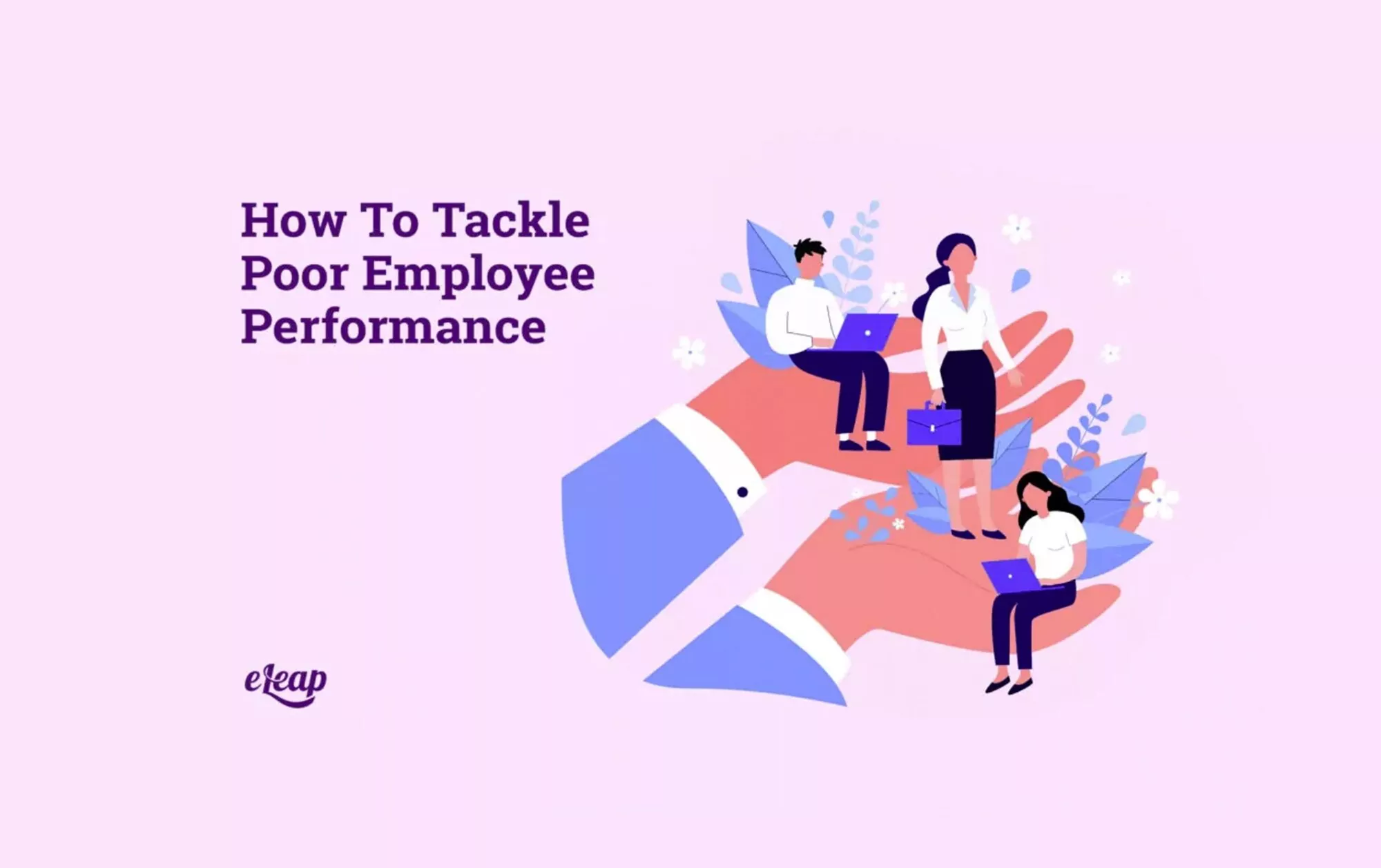How To Tackle Poor Employee Performance

Being a leader is challenging on the best of days, but when it comes to dealing with poor employee performance, it’s particularly tough. All too often, managers make it even more difficult for themselves by not addressing performance issues in a timely manner. Some of the top reasons given for not dealing with poor employee performance include:
- Avoiding Conflict – Attempts to avoid bad reactions often lead to not addressing poor employee performance. Often, leaders choose not to confront negative issues because they want harmony and positivity.
- Concerns About Morale – When changes happen, such as a company downsizing or merging, leaders may be reluctant to confront low performers for fear that their team may be negatively affected.
- Attempting to Avoid Turnover – In order to prevent turnover rates from skyrocketing, many leaders avoid addressing poor performance for fear that it will cause an employee to quit. Additionally, many leaders are reluctant to fire low-performing employees for similar reasons.
- Personal Problems – It’s not uncommon for managers to feel guilty when employees have personal problems, even if those personal problems cause them to perform poorly.
Leaders who don’t take definitive action when it comes to employee performance are putting their entire team and organization at risk. It’s important to come up with a game plan for dealing with underperforming team members in real time. If no action is taken, it can lead to numerous issues, such as lower team productivity, engagement, and morale, as well as loss of respect by team members and peers. What’s more, failing to deal with low performers can communicate to others that underperforming is acceptable.

When employees receive feedback on their performance, managers can then apply sound practices, making it easier for them to take action. Despite the fact that both constructive and negative feedback work to highlight areas where performance or behavior needs to be improved, constructive performance feedback provides direction on how to do so. Negative feedback offers no suggestions for enhancing the problematic aspects of an employee’s work.
Negative feedback can actually dishearten an employee to the point where future performance is made even worse. When only negative feedback is received, employees tend to feel discouraged and unsure of how to improve. Negative feedback can also restrict a person’s perception of a situation and impede their creativity, which in turn hinders their ability to improve.
On the other hand, constructive feedback works wonders in improving employee performance. To facilitate behavioral change and performance improvement, feedback on poor performance needs to be delivered in a certain way. To achieve this, however, leaders need to be consistent in their feedback. Once a properly functioning performance management system has been implemented, dealing with challenges on time will become significantly simpler.
Ways to Properly Address Poor Employee Performance
Start With a Good Plan
To start with, leaders should collect information to determine whether the employee is performing poorly or not and then provide specific examples of the behavior that concerns them. Then, outline how poor performance impacts the employee themselves and also you as a leader and the entire team. Finally, outline the ways in which you can support the employee as they try to improve their performance so they know how to progress.
Provide Feedback with Care and Dignity
Respecting employees when providing feedback and maintaining dignity is critical. Conversations should take place in a quiet, private location with no distractions and certainly without other team members around. Reduce interruptions as much as possible, and make sure to be kind and considerate when delivering feedback. At the same time, make sure you are direct. Attempting to soften the blow by downplaying the issue will only cause more problems in the long run.
Be Specific
If there is a problem in performance or behavior, describe it specifically and get straight to the point. Make sure to be very clear when explaining the gap between what is expected and the current way in which the employee is performing. It’s also critical that personal feelings don’t get in the way and cloud the feedback you are providing. What’s more, be very specific about the ways in which poor performance has negative consequences for both the employee and the organization.
Acknowledge The Employee’s Perspective
Always give the employee a chance to explain what they feel is causing their poor performance. If you listen to what they have to say, you may learn something new that changes how you decide to proceed with the problem. Regardless of whether their view differs from your own, acknowledge their perspective so that they feel valued. At the same time, ensure you maintain the focus on the performance issue throughout the conversation.
Suggest a Collaborative Solution
Develop a performance improvement plan with the employee to find a solution. Allow them to identify some possible solutions themselves before you offer your own suggestions. Describe how you anticipate resolving the issue with them and letting them know how valuable cooperation will be. Then, plan and agree upon the next steps, making sure to follow up with documentation of the conversation and the solution.
Clarify Next Steps
Make sure the employee understands what the plan is moving forward. If you need to document the conversation, make that clear. Ensure a clear understanding of the next steps, as well as what will happen if the employee fails to improve their performance.
Put The Plan into Action
Once the conversation is complete, the plan needs to be put into action. The best way to track performance notes and develop development plans is through an online performance management system. Make sure to create a clear document that outlines the situation, the discussion, and the plan of action.
Having discussions about poor performance can be intimidating, but it’s also a crucial component of leadership. Without such conversations, an entire team and organization’s performance can be negatively affected. Leaders should understand the right ways to go about performance discussions to ensure they don’t have an adverse effect and that employees know how to correct their performance problems.